What Is Admixture | 26 Types of Admixtures | Advantages & Disadvantages of Admixture
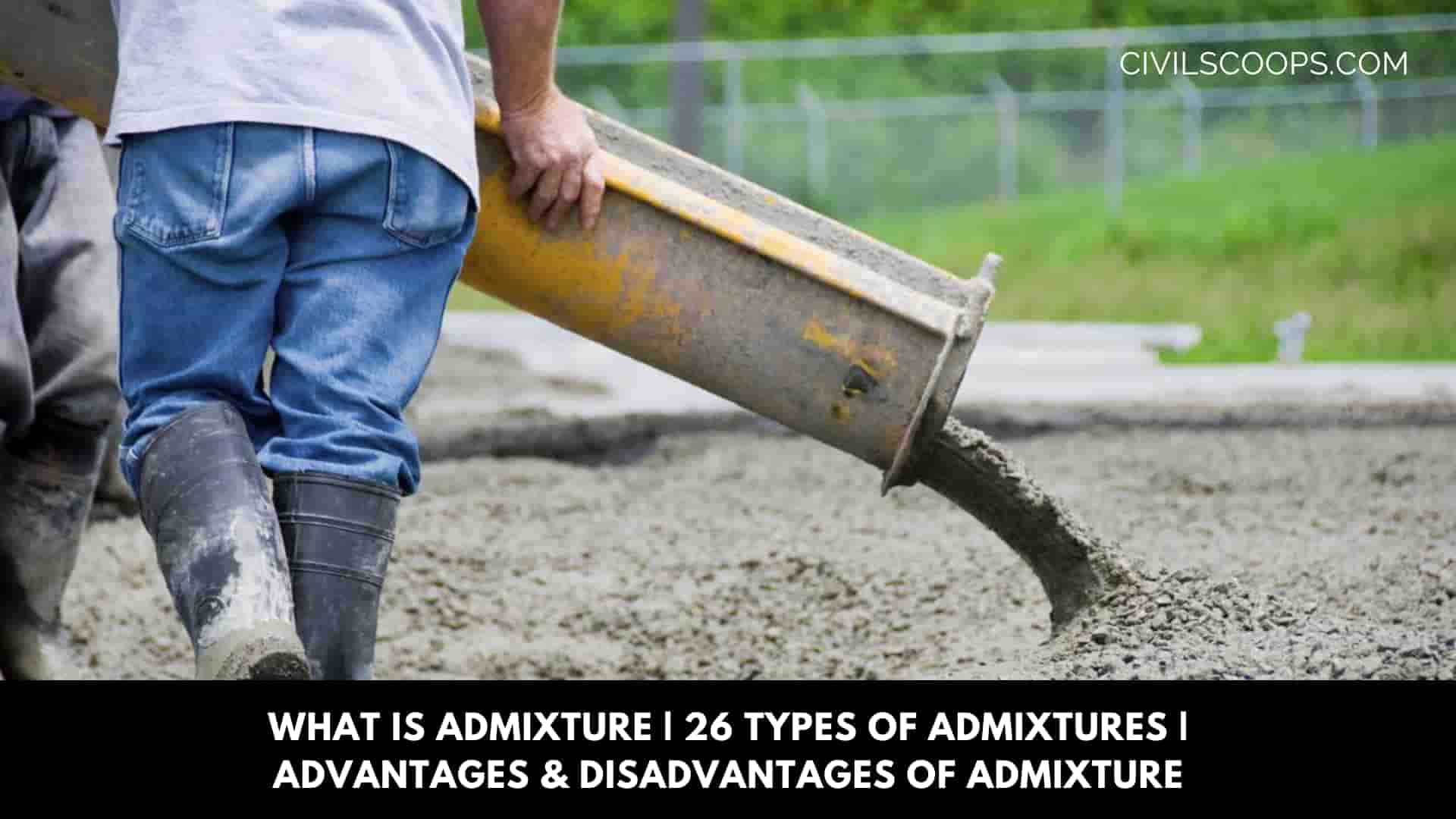
Table of Contents
What Is Admixture?
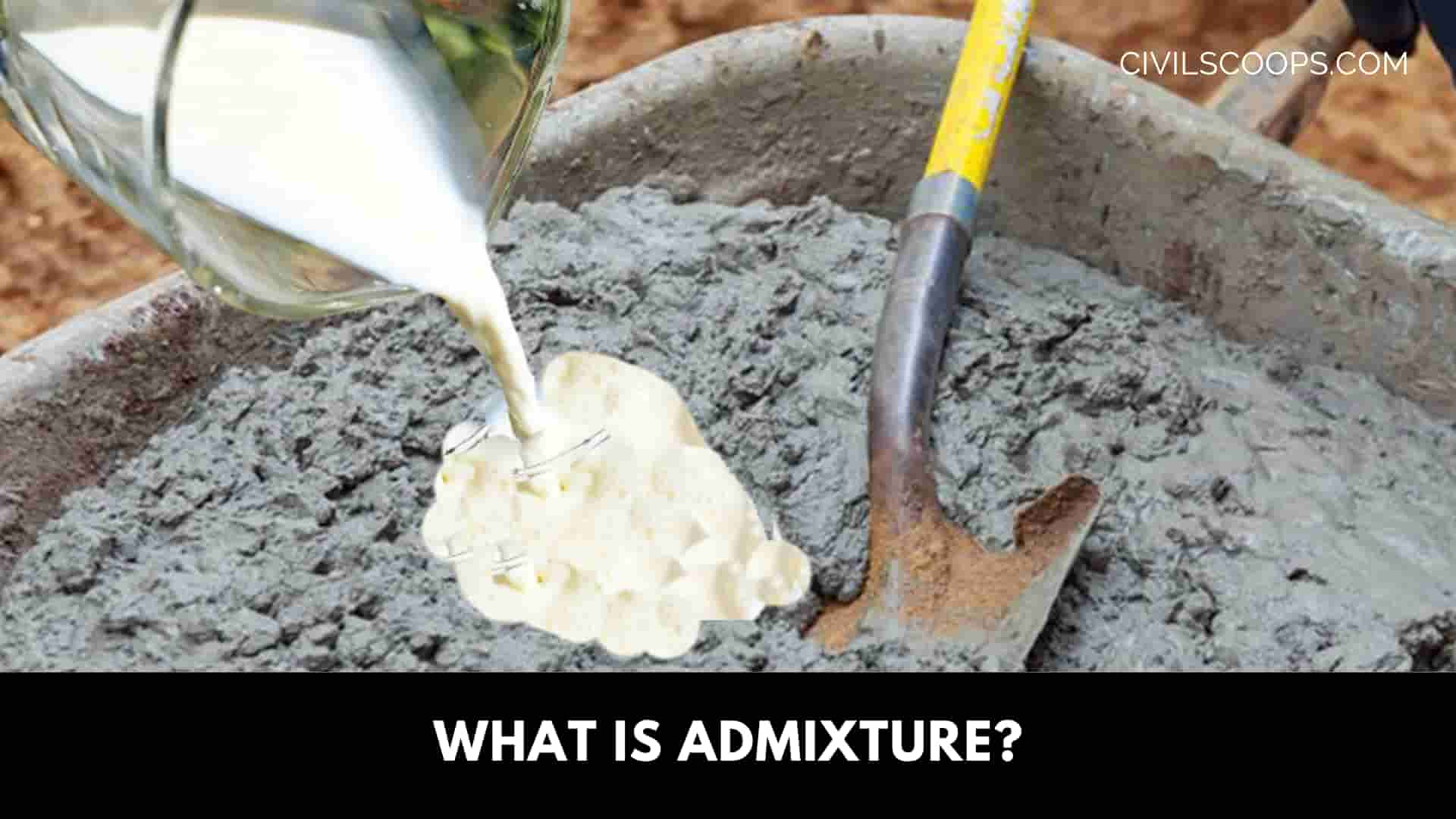
Admixture is artificial or natural materials added to concrete, in addition to cement, water, and aggregates, to improve certain properties of concrete during casting, laying, or the service stage.
To improve the properties of the concrete needed. It can be divided into two groups which are:
- Chemical
- Mineral
Types of Admixtures Used in Concrete
Here, we are discussing 15 Different types of admixtures used in concrete are as follows.
1. Water Reducing Admixture
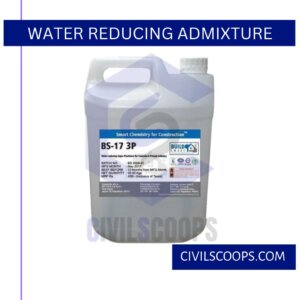
Water-reducing Admixture, the name itself defines that they are used to minimize the demand for water in a concrete mix.
Workability is the important property of concrete, which is improved by adding water, but if the water is added more than necessary, the strength and durability properties of concrete will be affected.
In addition, to increase workability, it also improves the strength of concrete, the good connection between concrete and steel, prevents cracking, segregation, honeycombs, bleeding, etc.
Water reducing Admixture are also called plasticizers and are classified into three types: plasticizers, mid-range plasticizers, and superplasticizers.
The normal plasticizer reduces water demand by 10%, mid-range plasticizers reduce water demand by up to 15%, while superplasticizers reduce water demand by up to 30%.
Calcium, sodium, and ammonium lignosulfonates are commonly used plasticizers. Some of the new generation superplasticizers are based on acrylic polymers, polycarboxylates, multicarbovyl ethers, etc.
2. Retarding Admixture
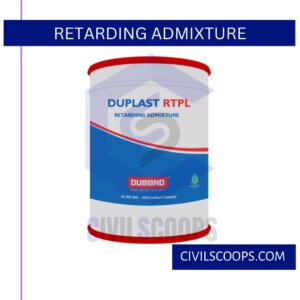
Retarding Admixture decrease the rate of cement hydration in its initial stage and increase the initial hardening time of the concrete.
They are also called retarders and are used especially in high-temperature areas, where concrete hardens quickly.
The quick configuration in some situations can lead to discontinuities in the structure, the lack of connection between the surfaces creates unnecessary voids in the concrete, etc. Retarders are useful to eliminate this type of problem.
Retardant additive commonly used is calcium sulfate or plaster. Starch, cellulose products, common sugar, acid salts are some other retarders.
Most water-reducing mixtures also act as a retardant additive and are called retardant plasticizers.
3. Accelerating Admixture
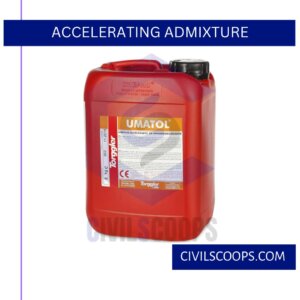
Accelerating Admixtures are used to reduce the initial hardening time of the concrete.
They speed up the process of the initial phase of concrete hardening, so they are also called accelerators.
These accelerators also improve the strength of the concrete in the initial stage, increasing the rate of hydration.
The previous hardening of the concrete is useful in several situations, such as early formwork removal, shorter curing period, emergency repairs, for buildings in low-temperature regions, etc.
Some of the accelerator mixtures are triethanolamine, calcium formate, active silica, calcium chloride, finely divided silica gel, etc. Calcium chloride is an inexpensive and commonly used accelerator mixture.
4. Air Entraining Admixtures
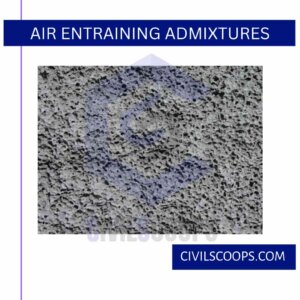
Air entrainment Admixture is one of the most important inventions in concrete technology. Its main function is to increase the durability of the concrete under freezing and thawing conditions.
When added to the concrete mix, these mixtures will form millions of non-coalescent air bubbles throughout the mix and improve the properties of the concrete.
The entry of air into the concrete will also improve the workability of the concrete, prevent segregation and bleeding, reduce the weight of the unit and the elastic modulus of the concrete, improve the chemical resistance of the concrete and reduce the content of cement or sand or water in the concrete, etc.
The most commonly used air entrainment Admixture is vinsol resin, darex, Teepol, Cheecol, etc.
These Admixtures are actually made from natural wood resins, alkaline salts, animal and vegetable fats, and oils, etc.
5. Pozzolanic Admixture
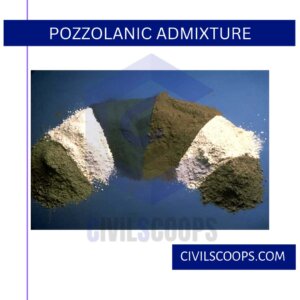
Pozzolanic mixtures are used to prepare a dense concrete mix that is most suitable for water retention structures, such as dams, reservoirs, etc. They also reduce the heat of hydration and thermal shrinkage.
The best pozzolanic materials in an ideal quantity provide better results and avoid or reduce many risks, such as the reaction of alkaline aggregates, leaching, attack of sulfates, etc.
The pozzolanic materials used as Admixture are natural or artificial.
Naturally occurring pozzolanic materials are the clay, shale, volcanic tufts, pumice, etc. and artificial pozzolans available are fly ash, silica fume, blast furnace slag, rice husk ash, etc.
6. Moisture–proof Admixture
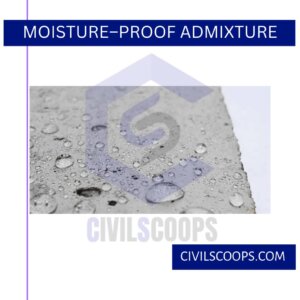
Moisture-proof or waterproofing Admixture is used to make the concrete structure impervious to water and to prevent moisture on concrete surfaces.
In addition to the waterproof property, they also act as accelerators in an early stage of concrete hardening.
Moisture-proof Admixture is available in liquid, powder, paste, etc.
The main constituents of this Admixture are aluminum sulfate, aluminum chloride, zinc sulfate, calcium chloride, sodium silicate, etc., which are chemically active pore fillers.
7. Gas Formation Admixture
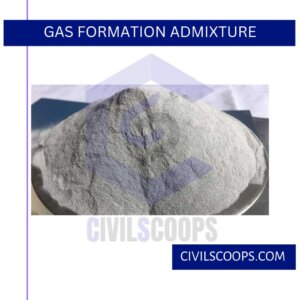
Aluminum powder, activated carbon, hydrogen peroxide are commonly used chemical gas-forming Admixtures.
When gas-forming Admixture is added, it reacts with the hydroxide obtained by hydrating the cement and forms small bubbles of hydrogen gas in the concrete.
The range of bubble formation in the concrete depends on many factors, such as the amount of mixture, the chemical composition of the cement, the temperature, the fineness, etc.
The bubbles formed help the concrete to fight the problems of settlement and bleeding.
Gas forming Admixture is also used to prepare lightweight concrete. For purposes of resistance to settlement and bleeding, a small amount of gas-forming Admixture is used, which is generally 0.5 to 2% by weight of cement.
However, in order to manufacture light concrete in greater quantity generally, 100 grams per bag of cement is recommended.
8. Air Detraining Admixtures
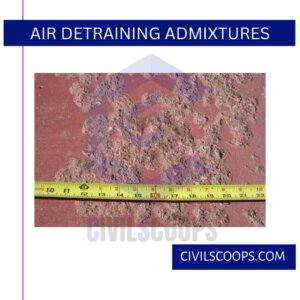
Air detraining mixtures are used to remove excess air from concrete voids.
Sometimes aggregates can release gas in the concrete, and the entrained air is more than necessary, so this type of mixture is useful.
Some of the most widely used detraining mixtures are tributyl phosphate, silicones, water-insoluble alcohols, etc.
9. Alkaline Aggregate Expansion that Prevents Admixture
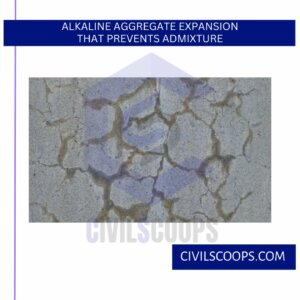
The expansion of the alkaline aggregate in the concrete occurs by the reaction of the alkaline cement with the silica present in the aggregates.
It forms a gel-like substance and causes volumetric expansion of the concrete, which can lead to cracks and disintegration.
The use of pozzolanic Admixture will prevent the reaction of alkaline aggregates, and, in some cases, air entrainment Admixture is also useful.
Admixture commonly used to reduce the risk of the reaction of alkaline aggregates are aluminum powder and lithium salts.
10. Anti–Wash Admixture
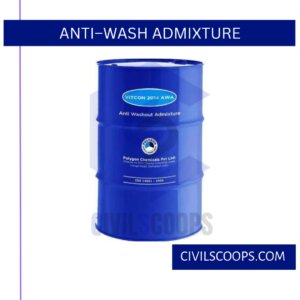
Anti-wash Admixture is used in concrete, especially for an underwater concrete structure.
It protects the concrete mixture from being washed under pressure underwater. It improves concrete cohesion.
This type of mixture is prepared from natural or synthetic rubbers, thickeners based on cellulose, etc.
11. Grouting Admixture

Grout additions are added to the grout materials to improve the grout properties according to the grout requirement. Sometimes there is a need for quick grouting, and sometimes there is a need for slow grouting to spread into deep cracks or fissures.
Therefore, different Admixture is used as grout Admixture based on the situation. Accelerators such as calcium chloride, triethanolamine, etc. are used as grout Admixture when the grout must be adjusted quickly.
Likewise, retarders such as mucic acid, plaster, etc. are used to shorten the grout hardening time. Gas-forming Admixture, such as aluminum powder, are added to the grouting material to neutralize the laying of foundations.
12. Corrosion Prevention Admixture
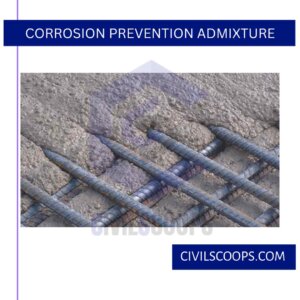
Corrosion of steel in the reinforced concrete structure is general and severe when the structure is exposed to saline water, industrial fumes, chlorides, etc. To prevent or delay the corrosion process, Admixture is used.
Some of the corrosion prevention additions used in reinforced concrete are sodium benzoate, sodium nitrate, sodium nitrite, etc.
13. Bonding Admixture
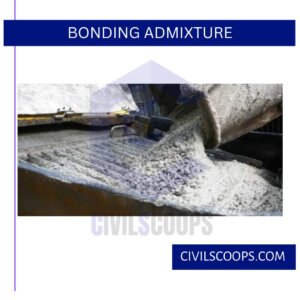
Bonding Admixture is used to create a bond between old and fresh concrete surfaces.
In general, if fresh concrete is poured onto a hardened concrete surface, there is a chance of failure of the fresh concrete surface due to weak connections with the old surface.
To make the bond stronger, bonding the Admixture is added to the cement or mortar grout that is applied to the concrete surface before laying the fresh concrete.
This type of additive is used for floor overlays, screed over roofing, repair work, etc.
The binding Admixture is water emulsions and is made of natural rubber, synthetic rubbers, polymers such as polyvinyl chloride, polyvinyl acetate, etc.
14. Fungicidal, Germicidal, and Insecticidal Admixture
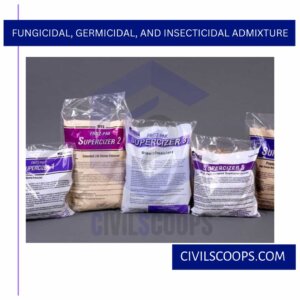
To prevent the growth of bacteria, germs, and fungi in hardened concrete structures, it is recommended that the mixture has fungicidal, germicidal, and insecticidal properties.
This property can be developed by adding mixtures such as polyhalogenated phenols, copper compounds, and dieldrin emulsions, etc.
15. Coloring Admixture
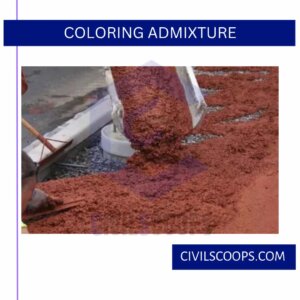
Coloring Admixture is the pigments that produce color in the finished concrete. The mixtures used to produce colors should not affect the strength of the concrete.
Generally, the color mixes are added to the cement in a ball mill, and then colored cement can be obtained that can be used to make colored concrete.
Advantages of Admixture

Admixture many advantages are as follows.
- The mixing of concrete can accelerate the setting time.
- There are some enzymes that work as an anti-bacterial agent.
- There are mixtures of concrete that reduce the initial strength but increase the strength of hardened concrete compared to normal concrete.
- It reduces the initial heat of hydration and overcomes the problem of thermal cracking in concrete; if there is excess heat of hydration the cracks can spread to the fresh concrete.
- Admixtures improve the resistance against the freeze-melting effect on concrete.
- Concrete mixtures maintain maximum stability by bringing waste products into use
- Admixtures reduce the required amount of cement and make concrete economical.
- They enhance the practicality of concrete.
- Admixtures provide initial strength in concrete.
Disadvantages of Admixture

Admixture many disadvantages are as follows.
- CaCl2 high risk of corrosion of steel – not allowed in reinforced concrete.
- It is more expensive and less effective.
- This increased drying shrinkage.
- This provides less resistance to sulfate attack.
[su_box title=”FAQ” style=”default” box_color=”#333333″ title_color=”#FFFFFF” radius=”3″ class=”” id=””]
What Is Admixture in Concrete?
A. An admixture is a material other than water, aggregates, cementitious materials, and fiber reinforcement, used as an ingredient of a cementitious mixture to modify its freshly mixed, setting, or hardened properties and that is added to the batch before or during its mixing.
What Is Admixture in Pharmacy?
› Solutions › TPN / I.V. Admixtures. An IV admixture is a resulting combination when one or more sterile products are added to a 50 mL or larger bag or bottle of IV fluid for parenteral administration.
Admixture Examples
Chemical admixtures are normally used to reduce the limitations of cement hydration, with examples being: water reducer, superplasticizer, retarder, accelerator, shrinkage preventer, segregation reducer, and heat evolution reducer.
What Is Chemical Admixture?
Chemical admixtures are the ingredients in concrete other than portland cement, water, and aggregate that are added to the mix immediately before or during mixing.
Disadvantages of Admixtures in Concrete
- It has increased drying shrinkage.
- It offers reduced resistance to sulphate attack.
- CaCl2 high risk of corrosion of steel – not permitted in reinforced concrete.
- It is more expensive and less effective.
Chemical Admixtures Used in Concrete
- Set retarding admixture.
- Air entrainment admixture.
- Water-reducing admixture.
- Accelerating admixture.
- Superplasticizer.
- Corrosion inhibiting admixture.
- Conclusion.
Water Reducing Admixtures
Water Reducing Admixtures (WRAs), sometimes referred to as plasticizers, are designed to free trapped water that is present in concrete mixtures and are used in a variety of applications to ensure or improve workability. When cement clinker is ground, electrical charges are created on the surface of the particles.
Water Reducing Admixtures Examples
Water reducers developed over the years can be categorized as lignosulfonates, hydroxycarboxylic acids, hydroxylated polymers, salts of melamine formaldehyde sulfonates or naphthalene formaldehyde sulfonic acids. The most recent technology, using polycarboxylates, was introduced in the 1990s.
Uses of Admixtures
Producers use admixtures primarily to reduce the cost of concrete construction; to modify the properties of hardened concrete; to ensure the quality of concrete during mixing, transporting, placing, and curing; and to overcome certain emergencies during concrete operations.
What Does Plasticizer Do to Concrete?
Plasticizers Plasticizers for concrete belong to the group of chemical admixtures for construction, which reduce the amount of water needed to obtain a certain consistency in concrete.
Which Admixture Is Used to Improve Workability?
Pozzolana used as an admixture in concrete has the following advantages: 1. It improves workability with a lesser amount of water.
Advantages of Admixtures in Concrete
Admixtures offer high workability, high compressive strength, durability, watertight, wear resistant, and high finish for the complex modern structures, which is expected to drive the growth of concrete admixture market.
Advantages and Disadvantages of Mineral Admixtures in Concrete
Chemically active mineral admixtures decrease workability and setting time of concrete but increase the heat of hydration and reactivity. On the other hand, microfiller mineral admixtures increase workability and setting time of concrete but decrease the heat of hydration and reactivity.
Types of Admixture
The seven types of admixtures are indicated as follows: Type A—water reducing; Type B—retarding; Type C—accelerating; Type D—water reducing and retarding; Type E—water reducing and accelerating; Type F—water reducing, high range; and Type G—water reducing, high range, and retarding.
Workability Admixture
A workability-retaining admixture provides flexible, but predictable, degrees of slump retention without retardation. It provides consistency in air-entrainment, slump, workability and strength, and minimize the need for jobsite slump adjustment using water or high-range water-reducing admixture.
Admixtures in Concrete
Concrete admixtures are natural or manufactured chemicals or additives added during concrete mixing to enhance specific properties of the fresh or hardened concrete, such as workability, durability, or early and final strength.
Does Plasticizer Weaken Concrete?
The concrete strength is inversely proportional to the w/c (water-cement ratio). But a certain amount of water has to be provided to ensure the complete hydration of cement and proper workability of concrete. What plasticizers do, us that they reduce this certain required amount. Hence, strength increases.
[/su_box]
[su_note note_color=”#F2F2F2 ” text_color=”#333333″ radius=”3″ class=”” id=””]
Like this post? Share it with your friends!
Suggested Read –
- 20 Types of Construction Beam & Their Uses
- 14 Types of Plaster Finishes (List of Plaster Finishing)
- What Is RQD | Advantages of Rock Quality Designation | Limitations of Rock Quality Designation (RQD)
- What Is a Concrete Vibrator | 6 Types of Concrete Vibrator | Concrete Vibrator Alternatives | Advantages of Concrete Vibrator | Disadvantage of Concrete Vibrator
- What Is Pneumatic Structures | Types of Pneumatic Structures | Advantages & Disadvantages of Pneumatic Structures | Uses of the Pneumatic Structures
[/su_note]
Originally posted 2023-03-21 13:30:14.
